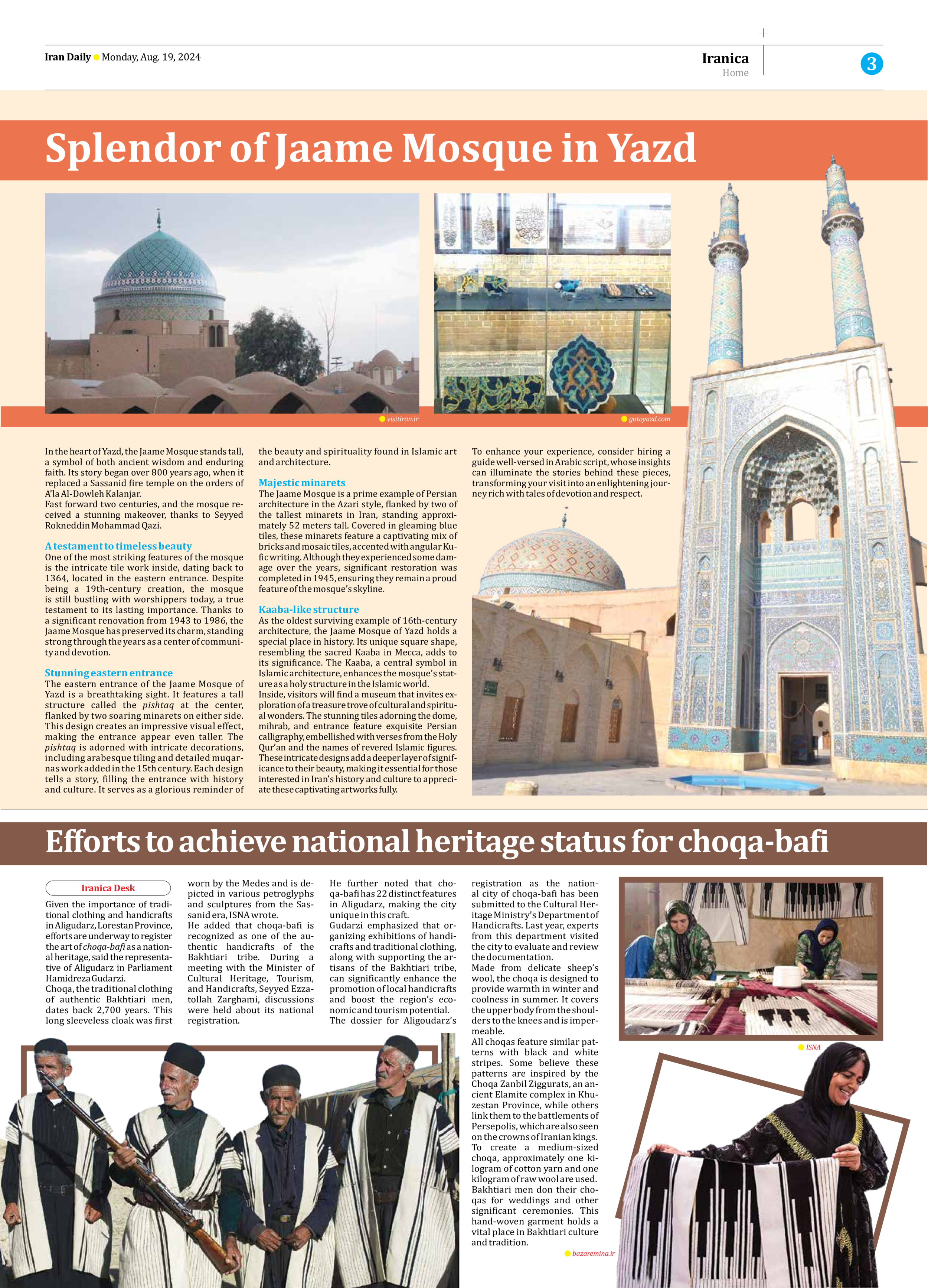
Splendor of Jaame Mosque in Yazd
In the heart of Yazd, the Jaame Mosque stands tall, a symbol of both ancient wisdom and enduring faith. Its story began over 800 years ago, when it replaced a Sassanid fire temple on the orders of A’la Al-Dowleh Kalanjar.
Fast forward two centuries, and the mosque received a stunning makeover, thanks to Seyyed Rokneddin Mohammad Qazi.
A testament to timeless beauty
One of the most striking features of the mosque is the intricate tile work inside, dating back to 1364, located in the eastern entrance. Despite being a 19th-century creation, the mosque is still bustling with worshippers today, a true testament to its lasting importance. Thanks to a significant renovation from 1943 to 1986, the Jaame Mosque has preserved its charm, standing strong through the years as a center of community and devotion.
Stunning eastern entrance
The eastern entrance of the Jaame Mosque of Yazd is a breathtaking sight. It features a tall structure called the pishtaq at the center, flanked by two soaring minarets on either side. This design creates an impressive visual effect, making the entrance appear even taller. The pishtaq is adorned with intricate decorations, including arabesque tiling and detailed muqarnas work added in the 15th century. Each design tells a story, filling the entrance with history and culture. It serves as a glorious reminder of the beauty and spirituality found in Islamic art and architecture.
Majestic minarets
The Jaame Mosque is a prime example of Persian architecture in the Azari style, flanked by two of the tallest minarets in Iran, standing approximately 52 meters tall. Covered in gleaming blue tiles, these minarets feature a captivating mix of bricks and mosaic tiles, accented with angular Kufic writing. Although they experienced some damage over the years, significant restoration was completed in 1945, ensuring they remain a proud feature of the mosque’s skyline.
Kaaba-like structure
As the oldest surviving example of 16th-century architecture, the Jaame Mosque of Yazd holds a special place in history. Its unique square shape, resembling the sacred Kaaba in Mecca, adds to its significance. The Kaaba, a central symbol in Islamic architecture, enhances the mosque’s stature as a holy structure in the Islamic world.
Inside, visitors will find a museum that invites exploration of a treasure trove of cultural and spiritual wonders. The stunning tiles adorning the dome, mihrab, and entrance feature exquisite Persian calligraphy, embellished with verses from the Holy Qur’an and the names of revered Islamic figures. These intricate designs add a deeper layer of significance to their beauty, making it essential for those interested in Iran’s history and culture to appreciate these captivating artworks fully.
To enhance your experience, consider hiring a guide well-versed in Arabic script, whose insights can illuminate the stories behind these pieces, transforming your visit into an enlightening journey rich with tales of devotion and respect.







